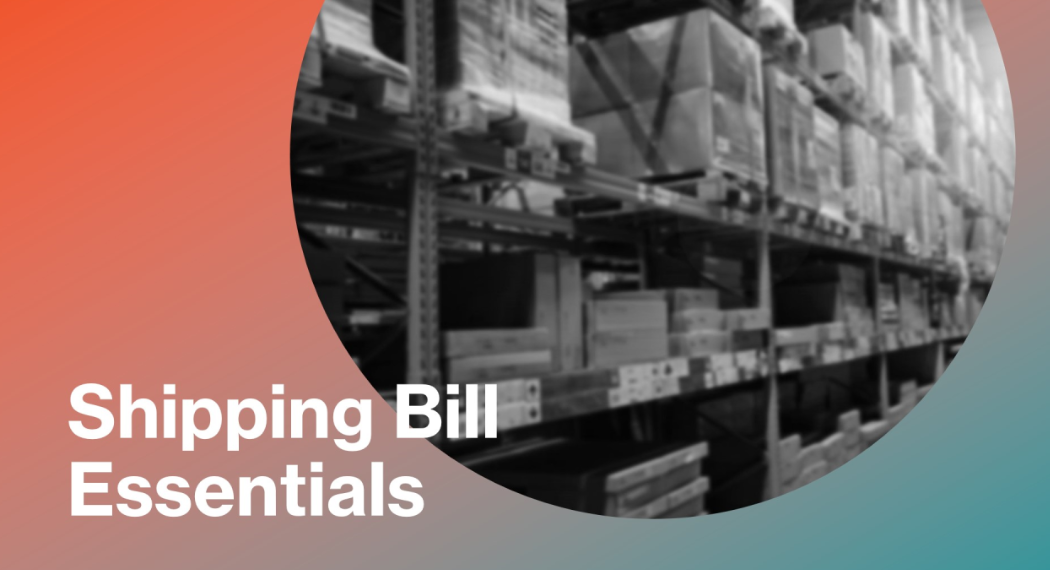
In the intricate tapestry of international trade, the shipping bill stands as a critical document, serving as a cornerstone for businesses engaged in exporting products. Understanding the requirements and nuances associated with the shipping bill is paramount for seamless cross-border transactions. This comprehensive guide delves into the intricacies of shipping bills, providing businesses with insights into the necessary requirements and essential considerations to ensure a smooth and compliant export process.
What is a Shipping Bill?
A shipping bill is a crucial document that serves as a formal request for customs clearance of exported goods. It includes essential details about the nature of the goods, their value, destination, and the mode of transport. Proper documentation of the shipping bill is vital for businesses looking to navigate the complexities of international shipping seamlessly.
What are the Shipping Bill Requirements for Exporters?
Accurate Product Description
Provide a detailed and accurate description of the exported products in the shipping bill. Avoid vague or generic descriptions to prevent misunderstandings and ensure smooth customs clearance.
Harmonized System (HS) Code
Assign the correct HS code to each product in the shipping bill. The HS code is essential for determining applicable tariffs and trade restrictions.
Invoice and Packing List Consistency
Ensure consistency between the information in the shipping bill, commercial invoice, and packing list. Discrepancies can lead to delays and additional scrutiny during customs clearance.
Country of Origin Declaration
Clearly declare the country of origin for each product in the shipping bill. Country of origin information is crucial for determining eligibility for trade agreements and preferences.
Export License and Regulatory Compliance
Verify if the exported products require an export license and include the license details in the shipping bill. Ensure compliance with all relevant export regulations and restrictions.
Value Declaration
Accurately declare the value of the exported goods in the shipping bill. The declared value is used for assessing customs duties and taxes.
Transportation Details
Provide comprehensive details about the mode of transportation and the intended route in the shipping bill. This information is vital for logistics planning and customs clearance.
Top 5 Tips for Accurate Shipping Bill Preparation
Electronic Submission and Automation
Embrace electronic submission options for shipping bills to streamline the documentation process. Automation reduces the risk of manual errors and accelerates customs clearance.
Incoterms and Contractual Agreements
Align the information in the shipping bill with the agreed-upon Incoterms (International Commercial Terms) in the sales contract. Ensure that the shipping bill reflects the terms of the contractual agreement between the buyer and the seller.
Proactive Communication with Customs Authorities
Establish open lines of communication with customs authorities. Proactively address any queries or clarifications to expedite the customs clearance process.
Documentation Storage and Record Keeping
Maintain a systematic record-keeping system for all shipping bills and associated documentation. Easy retrieval of documents is crucial for audits, compliance checks, and future reference.
Insurance Coverage
Confirm that the shipping bill includes accurate details regarding insurance coverage for the exported goods. Adequate insurance coverage safeguards against potential losses during transit.
This blog by DHL, a global logistics and express courier company, delves into how it has brought about digitalization in its shipping processes to enhance the efficiency of its shipping processes. By implementing digital tools for documentation, including shipping bills, DHL has reduced processing times and minimized the risk of errors. This case study underscores the benefits of leveraging technology for streamlined export processes.
Future Trends and Technological Integration in Shipping Bills
In shipping bills, future trends are increasingly incorporating advanced technologies to streamline processes and ensure reliability. One notable trend is the integration of blockchain technology, which revolutionizes transparency by maintaining an immutable record of shipping bill data. This ensures the integrity and traceability of transactions, offering stakeholders unparalleled confidence in the accuracy and security of shipping documentation.
Another pivotal innovation is the adoption of Artificial Intelligence (AI) in document management. AI-powered solutions are being leveraged to automate and enhance the verification and validation of shipping documents. By analyzing vast amounts of data quickly and accurately, AI can identify discrepancies and anomalies, significantly reducing processing times and improving overall document accuracy. This technological synergy not only boosts operational efficiency but also sets a new standard for reliability in the intricate landscape of shipping bill management.
Frequently Asked Questions (FAQs)
1. How Does Digitalization Impact Shipping Bill Processing?
Digitalization in shipping bill processing streamlines documentation and communication between exporters, importers, and customs authorities. It reduces paperwork, speeds up clearance times, and enhances data accuracy. Automated systems also provide real-time updates, improving transparency and efficiency in international trade transactions.
2. How Do Shipping Bills Support Cross-Border E-Commerce?
Shipping bills streamline customs clearance for e-commerce shipments, ensuring faster delivery times and cost-effective shipping options. They provide necessary documentation for international trade compliance, enabling online retailers to expand their market reach and deliver a seamless customer experience globally.
3. Can Shipping Bills Impact International Trade Negotiations?
Shipping bills provide critical data on trade volumes, import-export trends, and tariff classifications, which inform policymakers during trade negotiations. They help governments analyze trade flows, identify market opportunities, and develop strategies to enhance economic competitiveness on a global scale.
